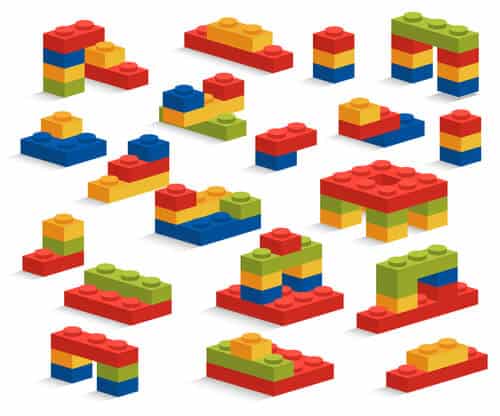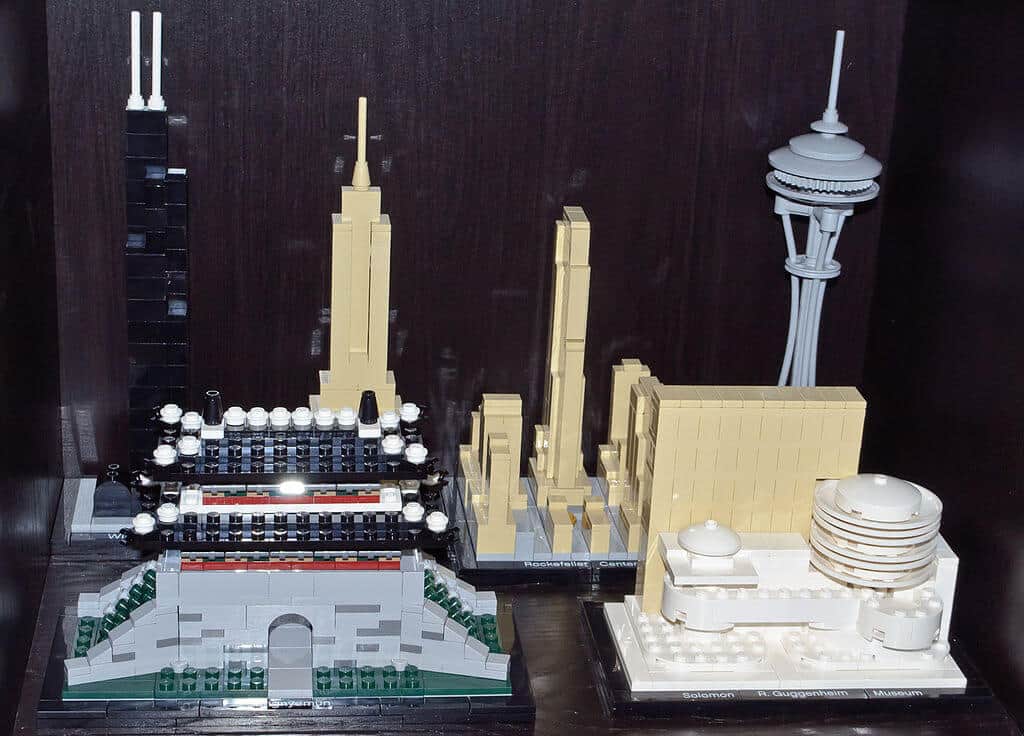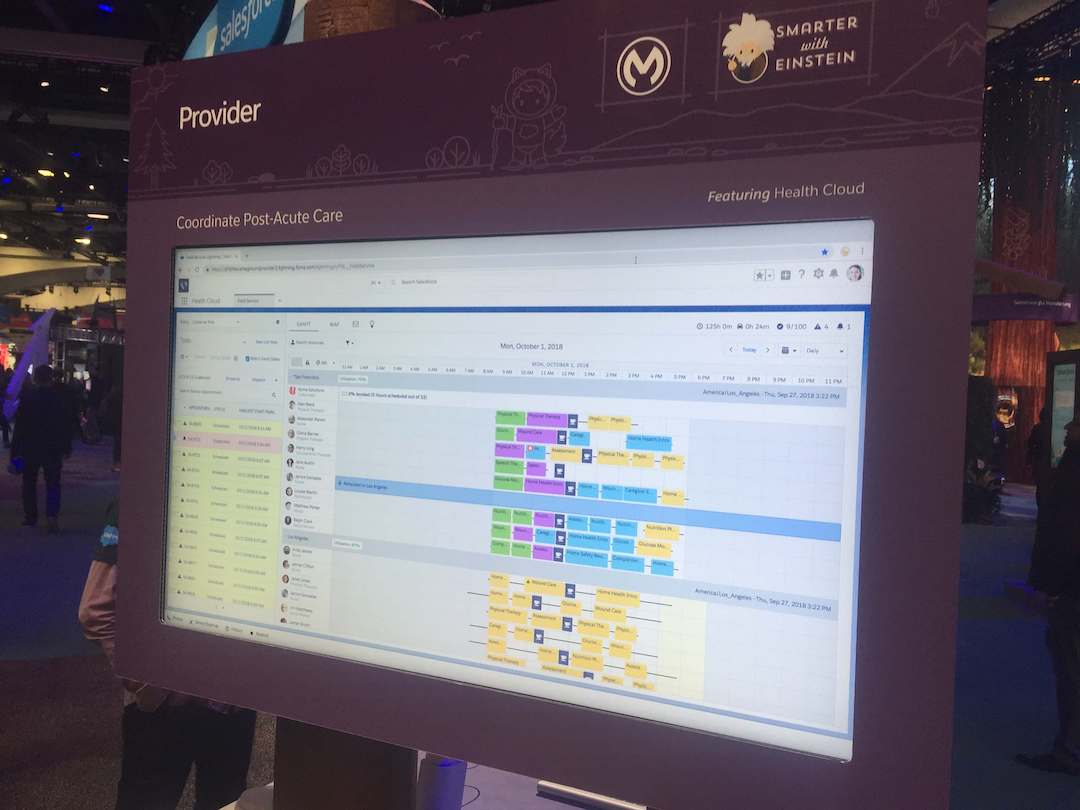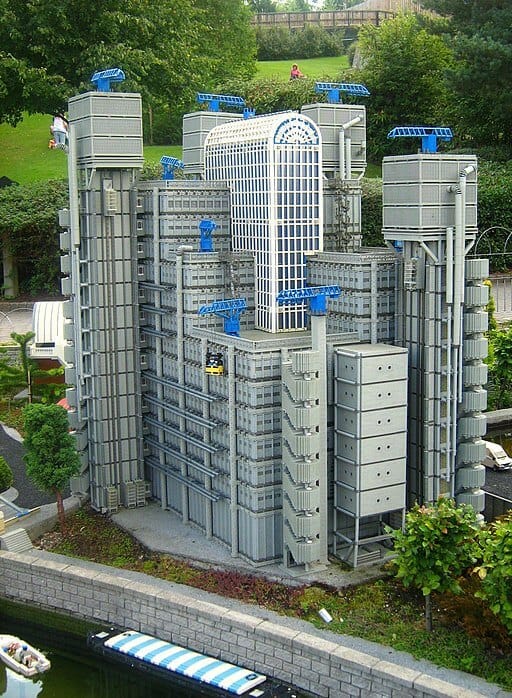 If you don’t live and breathe a certain technology, it can be difficult to understand what it is and how it works. Like many people, I’m still trying to fully understand blockchain.
If you don’t live and breathe a certain technology, it can be difficult to understand what it is and how it works. Like many people, I’m still trying to fully understand blockchain.
I do, however, live and breathe Salesforce. Part of my job is to explain Salesforce and Salesforce Health Cloud to others.
At Salesforce’s 2018 Dreamforce conference, a sales engineer who specializes in the healthcare and life sciences industries told me he sometimes uses a LEGO analogy to explain to people what Salesforce Health Cloud is.
Here’s my stab at the analogy.
The Starting Point: A Simple Structure
Salesforce, as its name implies, began as an application for salespeople. In March of 2000, the then Salesforce.com home page read:
At the time, an online database that helped salespeople get better organized filled a big need. A database that was served up from the cloud was a novel concept.
It all began as a simple LEGO Classic structure.

But the sales user focus of Salesforce software was just a starting point.
A More Sophisticated Architecture
Over the course of eighteen plus years, a narrow focus mushroomed into broad coverage across many corporate departments and many industries, including healthcare and life sciences.
Users of Salesforce expanded from salespeople to marketers, customer support techs, field service personnel, call center agents, care coordinators, nurses, physicians, and many other types of users.
This was possible because, over time, Salesforce pre-built more sophisticated core structures, similar to the LEGO Architecture series—except these structures came pre-assembled.

Customers were now able to pick and choose which of the architectural structures to place on the table top—a.k.a. the cloud platform.
Pre-Designed Structures For Healthcare & Life Sciences
In recent years, Salesforce has been rolling out more and more modular structures that are pre-designed for healthcare organizations.
For example, field service is a module that can be used by life sciences companies for servicing field equipment. The same module can be used for scheduling nurse and PT home visits for post-acute care.

Several of the structures that come with Salesforce Health Cloud are immediately useful to a healthcare organization. Those can be left in place. Pre-built structures can be altered by moving pieces around and adding new pieces.
Some of pre-built structures may not apply. Those structures can be taken off the table top.
Starting off with slightly modified versions of pre-built structures is a “rapid deployment” approach to implementation.
Custom Structure Creation
Salesforce partners and customers can create their own custom structures using the building blocks that Salesforce provides, sometimes along with third party technologies.

Some partners have created modular structures that can be snapped into different organizations. For example, at J2 Interactive, we’ve built a Telehealth module for Salesforce Health Cloud.
Building Bridges Among Platforms
I mentioned blockchain at the beginning of this post.
At a Dreamforce 2018 healthcare & life sciences demo station, a sales engineer previewed the concept of a connection from a patient information blockchain to Salesforce.
Blockchain can be viewed as a separate LEGO platform that Salesforce will build bridges to.

A blockchain connection will be another of many existing and planned bridges between Salesforce and other cloud platforms. A Salesforce/Apple strategic partnership was announced at Dreamforce 2018. Salesforce, its partners and its customers will continue to enhance and build connections among cloud and ground platforms.
About the Author
 John Rounseville is Executive Director of Business Development at J2 Interactive.
John Rounseville is Executive Director of Business Development at J2 Interactive.
J2 Interactive is an award-winning software development and IT consulting firm specializing in customized solutions for hospitals, labs, research institutions, and health information exchanges. Connect with us to learn more.



